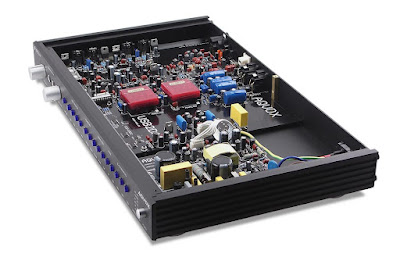China's Musiland has gained quite a following especially in the headphone enthusiast circles. Its MD10 is considered one of the best in terms of price/performance ratio. Its new DAC/Headphone amp, the MD30 features USB2.0 high speed asynchronous interface at up to 32bit/192kHz. At its core, a FPGA audio processing technology promise lower jitter and more accurate sound. Also new is an asynchronous high-speed cache and DDS re-clocking scheme via is 1ps high precision programmable clock. Its headphone section features "Energy Headphone Amp Level-III" technology provides a comprehensive headphone drive capability than competitors.
Specifications1. Digital input:
- USB 2.0 High Speed Interface: 16, 24, 32Bit sampling depth up to 192kHz
- Coaxial RCA, BNC coaxial, fiber optic, AES: 16, 24Bit sampling depth up to 192kHz. Support MMDI instruction
- MULINK high-definition digital interface (proprietary i2s): 16, 24, 32Bit sampling depth up to 192kHz. Support MMDI instruction.
- Clock jitter (44.1kHz): S/PDIF less than 30PS, USB, MULINK less than 20PS
- XLR balanced and RCA unbalanced
- Dynamic range: greater than 120dB
- SNR (A weighted): greater than 120dB
- Total harmonic distortion: less than 0.0005%
- Frequency Response (20Hz ~ 20KHz): +-0.2dB
- Max Level: RCA Line 2V rms; XLR line 6V rms
- Output Impedance: 10KΩ
- Max Level: 4V rms
- Impedance: 10Ω
- Power: 260mW/RL = 300Ω


















































